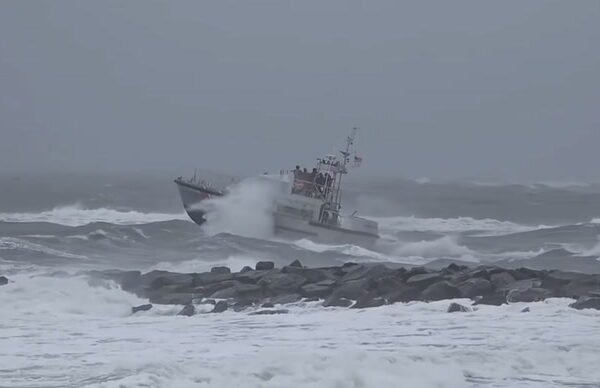Winter is coming, and if you’re like me, you’re already wondering whether to stock up on snow shovels or sunscreen. As someone who’s lived through Midwest blizzards and Southern heatwaves, I know how much a winter forecast can shape your plans—whether it’s prepping for a ski trip or bracing for icy commutes. The 2024-2025 winter season is shaping up to be a mixed bag, heavily influenced by a weak La Niña and other atmospheric patterns. Let’s dive into what the experts are saying, region by region, and how you can prepare for the season ahead.
Why Winter Forecasts Matter
Understanding the winter forecast isn’t just about satisfying curiosity—it’s about practical planning. From farmers preparing crops to skiers chasing powder, a reliable forecast can make or break your winter. The 2024-2025 season is particularly intriguing due to the interplay of La Niña and other climate drivers like the Atlantic Quadpole Mode (AQM). Here’s what you need to know to stay ahead of the curve.
The Role of La Niña
La Niña, characterized by cooler-than-average sea surface temperatures in the Pacific, is expected to emerge with a 57-74% chance by late fall and persist through early 2025. Unlike a strong La Niña, this one’s predicted to be weak, meaning its impacts will be less dramatic but still noticeable. It typically shifts storm tracks northward, bringing wetter conditions to the northern U.S. and drier weather to the south.
Other Climate Influences
Beyond La Niña, the Atlantic Quadpole Mode (AQM) is shifting to a cooler phase, which could amplify cold snaps in the central and eastern U.S. Solar Cycle 25, nearing its peak, and a transitioning Quasi-Biennial Oscillation (QBO) also add complexity, potentially intensifying cold events in certain regions. These factors make this winter’s forecast a fascinating puzzle.
Regional Winter Forecasts for 2024-2025
The U.S. is a big place, and winter doesn’t hit every region the same way. Below, I break down the forecast for key areas, based on insights from NOAA, the Farmers’ Almanac, and other trusted sources. Whether you’re in the snowy North or the sunny South, here’s what to expect.
Pacific Northwest: A Snowy Paradise
Expect cooler-than-average temperatures and above-normal precipitation, especially in Washington, Oregon, and northern Idaho. Ski resorts like Whistler Blackcomb and Schweitzer are gearing up for a solid season, with heavy snowfall predicted. If you’re a powder hound, this is your spot.
Northeast and Great Lakes: Cold with Snowy Surprises
The Northeast, including New York and Vermont, will see near-average temperatures but with bursts of cold in late January and early February. Lake-effect snow will pile up around Buffalo and Cleveland, making resorts like Killington a safe bet for skiers. Snowfall may hit 50-60 inches in some areas, a step up from last year’s lighter season.
Midwest: A Chilly, Mixed Bag
The Midwest, particularly the Upper Mississippi River Valley, faces variable conditions due to La Niña’s influence. Expect colder-than-normal snaps in January, with precipitation ranging from snow to ice. Resorts like Boyne Mountain could see deeper powder than last year’s modest base. Plan for late January trips to catch the best snow.
Southeast and Gulf Coast: Warm and Dry
Warmer-than-average temperatures are forecast for the Southeast, with drier conditions along the Gulf Coast and lower mid-Atlantic. Snow will be rare, except in northern Appalachian areas. If you’re in Florida, expect more rain than snow, with February temperatures possibly 3°F above average.
Southwest and Southern Plains: Dry with Cold Snaps
California, Nevada, and Texas will see drier-than-average conditions, with resorts like Heavenly relying on snowmaking. Periodic cold snaps could bring freezing rain to northern Texas and Oklahoma, so keep an eye on weather apps for sudden shifts.
Rockies: Variable Snowpack
The Rockies, especially northern Utah and northwest Colorado, are set for above-average snowfall, favoring resorts like Alta and Vail. However, southern Colorado and New Mexico may see thinner snowpack due to drier conditions. Plan trips to higher-elevation resorts for the best snow.
Comparison: 2024-2025 vs. 2023-2024 Winter
Last winter, a strong El Niño brought warmer temperatures and a snow drought across much of the northern U.S. This year’s weak La Niña flips the script, promising wetter conditions in the north and drier weather in the south. Here’s a quick comparison:
| Region | 2023-2024 (El Niño) | 2024-2025 (Weak La Niña) |
|---|---|---|
| Pacific Northwest | Below-average snow, warm | Above-average snow, cooler |
| Northeast | Snow drought, mild | Snowier, colder snaps |
| Midwest | Warmer, variable precipitation | Colder, more snow/ice |
| Southeast | Wet, mild | Warmer, drier |
| Southwest | Heavy snow in some areas (e.g., Utah) | Drier, thinner snowpack |
This shift means skiers in the Northwest and Northeast have more to look forward to, while Southerners might enjoy milder days but face drought concerns.
Pros and Cons of the 2024-2025 Winter Forecast
Every forecast has upsides and downsides, depending on your perspective. Here’s a breakdown to help you plan:
Pros
- Skiers’ Delight: The Pacific Northwest and northern Rockies will see heavy snowfall, perfect for winter sports.
- Milder South: Warmer temperatures in the Southeast and Gulf Coast mean less heating demand and easier commutes.
- Drought Relief: Wetter conditions in the Ohio River Valley and Great Lakes could ease drought in those areas.
- Early Snow: Some areas may see snow as early as November, kicking off the season sooner.
Cons
- Drought Woes: The Southwest and Southern Plains face drier conditions, worsening drought in some areas.
- Variable Midwest: Ice and mixed precipitation could make travel tricky in the Midwest.
- Limited Southern Snow: Ski resorts in the Southeast, like Snowshoe, may rely heavily on snowmaking.
- Cold Snaps: Sudden Arctic blasts in January could catch unprepared regions off guard.
Preparing for Winter: Practical Tips
Whether you’re a homeowner, traveler, or outdoor enthusiast, here’s how to make the most of the 2024-2025 winter forecast:
- For Homeowners: Stock up on rock salt and check your heating system early, especially in the Midwest and Northeast. Insulate pipes to prevent freezing during cold snaps.
- For Skiers: Book trips to Pacific Northwest or northern Rockies resorts like Jackson Hole or Snowbird for the best powder. Check OpenSnow for real-time snow forecasts.
- For Travelers: Avoid late January travel in the Midwest due to potential ice storms. Use apps like AccuWeather for updates.
- For Gardeners: In the Southeast, prepare for an early thaw with drought-resistant plants, as precipitation may be below average.
Best Tools for Tracking the Winter Forecast
Staying informed is key to navigating winter’s twists and turns. Here are the best tools to keep you in the loop:
- NOAA’s Climate Prediction Center: Offers monthly updates on seasonal outlooks. Visit cpc.ncep.noaa.gov.
- Farmers’ Almanac: Provides detailed regional forecasts and historical accuracy reviews. Available at farmersalmanac.com.
- AccuWeather App: Delivers real-time alerts and long-range forecasts. Great for skiers and travelers.
- OpenSnow All-Access: Perfect for ski enthusiasts, with 10-day snow forecasts for resorts nationwide.
People Also Ask (PAA)
Here are answers to common Google queries about the 2024-2025 winter forecast:
Will 2024-2025 Be a Cold Winter in the U.S.?
While not uniformly cold, the northern U.S. will see colder-than-average periods, especially in January and February, due to a weak La Niña and potential polar vortex events. The South will lean warmer.
How Much Snow Will the Northeast Get?
The Northeast is expected to see 50-60 inches of snow in some areas, with lake-effect snow boosting totals around the Great Lakes. Late January and early February will be the snowiest periods.
Is La Niña Affecting the 2024-2025 Winter?
Yes, a weak La Niña is likely to develop by late fall, bringing wetter conditions to the northern U.S. and drier weather to the south. Its weak nature means impacts will be moderate.
Where Can I Find Reliable Winter Forecasts?
Check NOAA’s Climate Prediction Center, the Farmers’ Almanac, or OpenSnow for detailed, region-specific forecasts. Apps like AccuWeather also provide real-time updates.
FAQ Section
What Is La Niña, and How Does It Affect Winter Weather?
La Niña is a cooling of Pacific Ocean waters that shifts storm tracks, often bringing wetter winters to the northern U.S. and drier conditions to the south. This year’s weak La Niña will have a milder impact than stronger events.
Which Regions Will See the Most Snow in 2024-2025?
The Pacific Northwest, northern Rockies, and Great Lakes regions are forecast to get the most snow, with resorts like Whistler Blackcomb and Alta expecting above-average snowfall.
How Accurate Are Long-Range Winter Forecasts?
Long-range forecasts, like those from NOAA or the Farmers’ Almanac, are about 50-51% accurate due to unpredictable atmospheric variables. They’re best for broad trends, not daily predictions.
What Are the Best Ski Resorts for 2024-2025?
Resorts in the Pacific Northwest (e.g., Schweitzer) and northern Rockies (e.g., Jackson Hole) are top picks due to heavy predicted snowfall. Check OpenSnow for resort-specific forecasts.
How Can I Prepare for Winter Storms?
Stock up on essentials like salt, shovels, and blankets. Use weather apps for real-time alerts, and check your vehicle’s tires and battery before cold snaps hit.
A Personal Note on Winter’s Magic
Growing up in Michigan, I remember huddling by the fireplace during lake-effect snowstorms, watching flakes pile up outside. There’s something magical about winter’s unpredictability—it’s a season that forces you to adapt and find joy in the chaos. Whether you’re building a snowman in the Midwest or basking in a sunny Southern February, the 2024-2025 winter will have something for everyone. So, grab your coat (or maybe just a light jacket), and let’s embrace whatever Mother Nature throws our way.
Final Thoughts
The 2024-2025 winter forecast promises a season of contrasts—snowy and cold in the north, warm and dry in the south. By understanding regional patterns and using tools like NOAA and OpenSnow, you can plan smarter, whether you’re hitting the slopes or battening down the hatches. Stay flexible, keep an eye on updates, and let’s make this winter one to remember. For the latest forecasts, visit NOAA’s Climate Prediction Center or grab a copy of the 2025 Farmers’ Almanac. Happy winter planning!





